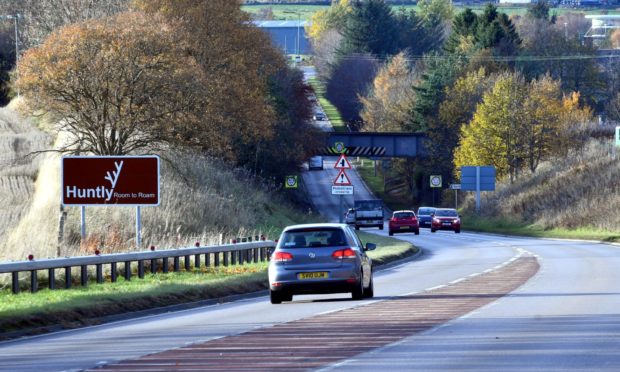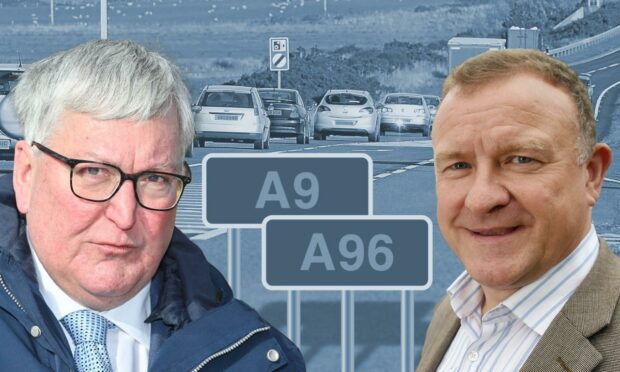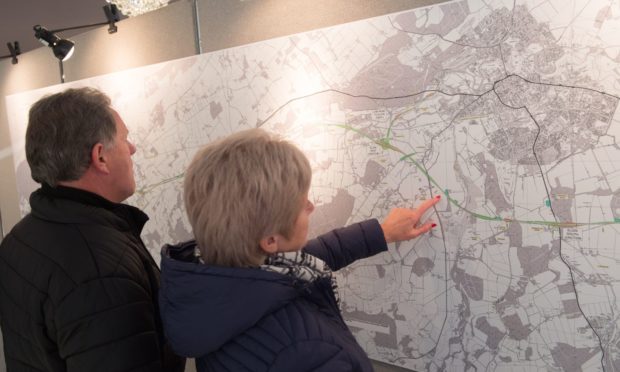Doubt has been cast over plans to fully dual the A96 ever since the Greens entered into a power-sharing deal with the SNP at Holyrood.
Calls have been made to deliver this major roads project for more than three decades – once known as the most dangerous road in Scotland.
The SNP government still officially promises to connect all of Scotland’s cities by dual carriageway.
But the future of the scheme became uncertain last year when the decision was made to review whether to fully dual the route because of climate concerns.
With yet another public consultation on the horizon, we take a look at what the government said it would deliver, what has changed, what has been agreed and what will happen next:
What did the government commit to?
In 2011, the Scottish Government committed to fully dual the 86-mile A96 route between Inverness and Aberdeen.
The target for completion of the work is 2030 but given the way forward has yet to even be agreed, this appears unlikely.
The plan was to connect all of Scotland’s cities by the dual carriageway network.
In 1989, the Press and Journal launched a campaign to dual the road in response to it being the most dangerous road in Scotland at the time.
Transport Scotland has said the benefits of the project are to reduce journey times and improve journey time reliability.
What happened once Greens entered government?
In August, the Scottish Greens joined the SNP in a power-sharing deal, which would see Green MSPs become government ministers for the first time in the UK.
The co-operation agreement between the two parties included a hugely controversial commitment to review plans to dual the A96 from Inverness to Aberdeen.
The Scottish Government has maintained in repeated public statements that its “current plan” remains to fully dual the entire route.
But this is no longer a certainty since officials have agreed to conduct what they refer to as a “evidence-based review” of the programme, which will look at its climate impact.
We revealed how two senior SNP politicians privately warned ministers not to back down to the Greens on A9 and A96 dualling.
This came just a few weeks before the power-sharing deal was struck between the two parties.
Fergus Ewing and Drew Hendry, who represent Inverness and Nairn at Holyrood and Westminster respectively, told ministerial colleagues at Holyrood they must honour their long-standing manifesto commitments to complete the road upgrades.
The pair highlighted how the Scottish Greens were the only party opposed to the £6 billion investment.
What have the Greens said about the A96 dualling plans?
North-east Green MSP Maggie Chapman revealed last year she is confident it will “not be viable” to fully dual the road for environmental reasons.
In an exclusive interview on The Stooshie – the DC Thomson politics podcast – she said there are “clear areas where there does need to be some work done for safety purposes” but the government has to “take a step back and look at this in the whole”.
The Green politician added that there are “ways other than building roads everywhere that allow us to increase connectivity and increase public transport options”.
The Tories have accused the SNP of seeking to appease a “party with seven MSPs” and rolling back on their commitments to dual the route.
What has been agreed?
The Scottish Government has committed to taking forward a “transport enhancements” programme on the A96 corridor that will “improve connectivity between surrounding towns, tackle congestion and address safety and environmental issues”.
Mr Ewing and Mr Hendry sought assurances that the dualling of the road between Inverness and Nairn, including the Nairn bypass, would not be included in the wider review.
They have received commitments that the review will not include this part of the road and that dualling will go ahead as planned.
The Scottish Government has agreed on:
- dualling from Inverness to Nairn
- bypassing of Nairn, Keith, Elgin and Inverurie accompanied by measures to remove through traffic from the by-passed town centres
- targeted road safety improvements where needed, for example between Fochabers and Huntly and Inverurie to Aberdeen
- the development of an A96 “electric highway”
What is under review?
The review will specifically look at whether to dual the route between Nairn to Inverurie.
Transport Scotland previously unveiled its preferred route for the dualling of the road between Huntly and Aberdeen.
This proposal included brand new dual carriageway being built over large swathes of open countryside between the two communities.
Some critics had asked for the dualling project to be carried out along the existing A96.
But this was discounted by officials who had concerns in the loss or impact on roadside properties, and believed it would compromise the standard of the road that would ultimately be provided.
The review will consider transport problems, such as road safety, and opportunities, such as encouraging the uptake of low emission vehicles within the A96 corridor.
It will also look at the “changing policy context and other key considerations, such as development and growth aims for the corridor and surrounding area”.
Finally, the review will consider the impact of the “global climate emergency and the Covid-19 pandemic on how people work and travel within the corridor”.
Scottish Conservative leader Douglas Ross says the review is confirmation the SNP is “seriously prepared to backtrack” on previous commitments.
What happens next over the A96 dualling proposals?
The Scottish Government this week launched a consultation for the public to have their say on the revised proposals.
Road users are being asked to share more information on how they use the route and issues they experience while doing so.
The consultation also seeks to find out how people’s views of the plans have changed following the pandemic, during which many travel habits have altered drastically.
The public can fill out the digital survey on Transport Scotland’s A96 Corridor Review page.
Transport Minister Jenny Gilruth said the government wants to hear from communities and stakeholders throughout the A96 corridor so their views can be taken into account.
The government has committed to the review reporting its findings by the end of this year.
The government will then have to decide its preferred way forward, whether that be full dualling of the route as planned or only upgrading certain sections.




